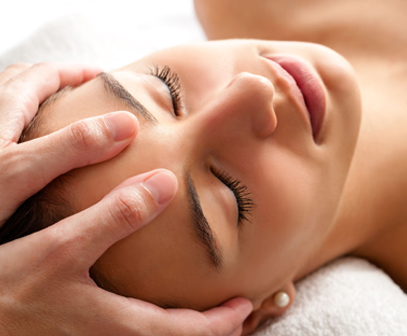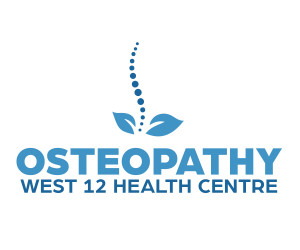As you can probably imagine, we at the West 12 Health Centre have nothing better to do with our time than read, research and post content for those of you reading this (Kidding! Ok, maybe not totally). This post is going to address healing – the healing of injuries, more specifically musculoskeletal injuries eg muscles, ligaments and tendons.
Before we begin though, we must stress that the timelines given for the healing of the tissues are rough guidelines that most people will fall into. Healing is a huge topic and is dependent on many, many factors that will vary from one person to the next. Generally, the fitter and healthier one is both MENTALLY and physically, the faster and more potential one has to recover.
Generally, when visiting a manual therapist (chiropractor, massage therapist, osteopath, physiotherapist etc), patients will find that there is an almost instant relieving of pain and better function after the treatment. Miraculous cures are generally the exception and not the rule with most conditions following a natural process of recovery. Healing after injury usually follows three stages:
Inflammation
Repair
Remodelling
All tissues (muscles, ligaments, bones etc) go through this healing process after injury. Times can vary depending on which tissue is injured. Generally, tissues that have an ample blood supply, such as muscles, tend to heal faster than tissues that do not have such a great blood supply, such as tendons and ligaments. Hence why we get those nagging tennis elbow injuries that never seem to go away, or achilles tendon problems that seem to last forever.
Inflammation
As you know, after injury there is always that initial period where everything around the area seems really sore and sensitive to touch. This is when the inflammation process has begun and is coincidentally the time in which we take anti-inflammatory medications. Usually the process peaks 48-72 hours after injury, which is why pain often gets worse before it gets better.
Inflammation is actually the bodies way of setting up the healing process. It makes the injured area very sensitive as it doesn’t want that area to be further damaged and what better way to do that then make the area so sensitive and sore that one doesn’t want to move it? During this time the area becomes really warm, especially the skin and you will generally notice swelling. The extra heat and swelling is partly due to the damaged cells and tissues but also due to the increase in blood flow to the injured area as the inflammatory process takes place. Blood carries everything needed to patch up the wound – platelets that clog up the area and stop the bleeding (scabs when skin is torn) as well as white blood cells which prevent and fight of potential infections entering the body. Any debris and damaged cells are carried away by the blood. Hence why tissues with an ample blood supply heal faster than tissues that do not.
The inflammatory process is a vital one that sets up the body for further healing. It is also a time when we feel most sore and sensitive, hence the use of anti-inflammatories. Some argue that we shouldn’t take them, however the pain can often inhibit us from our daily activities and that is when they can be useful.
There can also be confusion over putting ice or using a warm water bottle during this time – ice is the preferred of the two as the cold makes the skin cooler, makes the blood vessels coming to the area smaller and reduces the inflammation and pain in the area. Hot water bottles do the opposite, although they feel nice when on.
Key points:
- Peaks at around 72 hours after injury and by 2 weeks is significantly less
- Pain often gets worse initially before getting better
- Vital process for the setting up of healing and preventing of infection
- Ice the area during this phase, do not use a hot water bottle
Repair
Thankfully our bodies decide to begin the repair process soon after the inflammation begins. As the inflammation peaks around 48-72 hours after injury, the real repair work begins as soon as the body has blocked and patched up the injury and peaks around 2 to 3 weeks later. From there it begins to taper off slowly but continues on for many months after the injury.
Louis Gifford, the physiotherapist and author, has written a great passage on this in this last set of books where he makes the point that although in the early stages after injury when we are really sore it is okay to take it easy, what really is important is that we are designed to heal WHILE WE ARE MOVING. He gives an example of a cut, where we don’t really pay attention to it and continue with our lives, not minding if it bleeds a little here and there. However, when we have back pain or other joint pain we stop completely, thinking that we are doing more damage to ourselves when in fact it is just the natural course of healing that it aches here and there. As time goes on the pain begins to die down and we can move more and more with less pain. His books Aches and Pains are a great read for all and something we would recommend.
Key Points:
- Begins 2-3 days after injury and peaks at 2-3 weeks post injury
- From 2-3 weeks post injury it slowly tapers off
- Take it easy initially for a day or two
- Most importantly – KEEP MOVING AS MUCH AS POSSIBLE even if it is sore
- Most injuries will heal and pain will slowly decrease as we slowly regain our function
Remodelling
This brings us to the last stage in the healing process and is one that works in harmony with the repair phase as you will now see. The remodelling begins 1-2 weeks after injury just as the repair phase starts to ramp up but first a little information on the technicalities. Bear with us, it should be pretty simple to understand.
When we injure our muscles, tendons, ligaments etc as you now know inflammation begins as the first stage in our step to healing and does a great job by increasing blood to the area, removing damaged cells and other parts, while also providing protection from infections. These are just a few functions of a long list of inflammation’s jobs. The second phase – repair begins with what one might call it a bit of a shabby repair job, if one were a builder or plumber.
The body decides it needs to plug the injury as quickly as possible to prevent further injury, which is clearly a good thing, however the materials used are not very strong and they lead to the formation of scar tissues eventually. The fibres of the initial stop gap are not very strong or well organised, nor do they align or run in a similar direction to the rest of the tissue. The feeling we get is that of stiffness as a result as the scar is not particularly stretchy or strong.
The best way to get stronger fibres to be laid down is to put progressive force or movement through the area consistently and as early as is safely possible into the repair process. The fibres then begin to gradually realign with the rest of the surrounding fibres along the lines of force being put through the area. To quote Louis Gifford,’Big point here is that this phase starts in the first 1-2 weeks and needs movement and physical stress to stimulate the shapening and neatening [of the fibres].’
A quick point to make here is that healing here is done by the formation of scars and continues for long after we stop feeling the pain and have returned to ‘normal’ activities. However, because of the scar formation, ultimately the injured area of the tissue does not return to the same strength as before injury. Although this does not mean that we cannot return to the pre-injury activites and train or compete at the same level as before the injury.
Key points:
- Begins around 1-2 weeks post injury
- Initial repair is like an emergency stop gap – stops further damage but not very strong or stretchy
- Scar tissue forms and is not as strong as pre-injury tissue
- Best way to strengthen area is to realign fibres of the scar by putting progressive and consistent force through muscle, ligament, tendon etc – DONE BY MOVING
The important lesson – MOVE AS EARLY AS SAFELY POSSIBLE POST INJURY and SORENESS DOES NOT MEAN YOU ARE DAMAGING IT FURTHER. Start slow and light and progressively increase the load.
That is enough for this post, make sure to look out for part 2, which will focus more individually on the healing times and adaptation of muscles, ligaments and tendons. Keep moving and as always, if you have any suggestions, don’t hesitate to contact us. All the best.
West 12 Health Centre
Twitter: @West12Health





